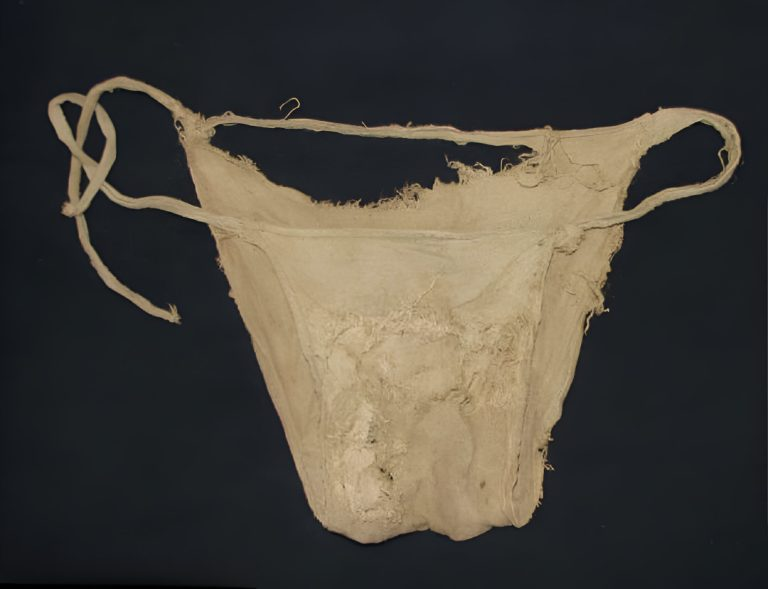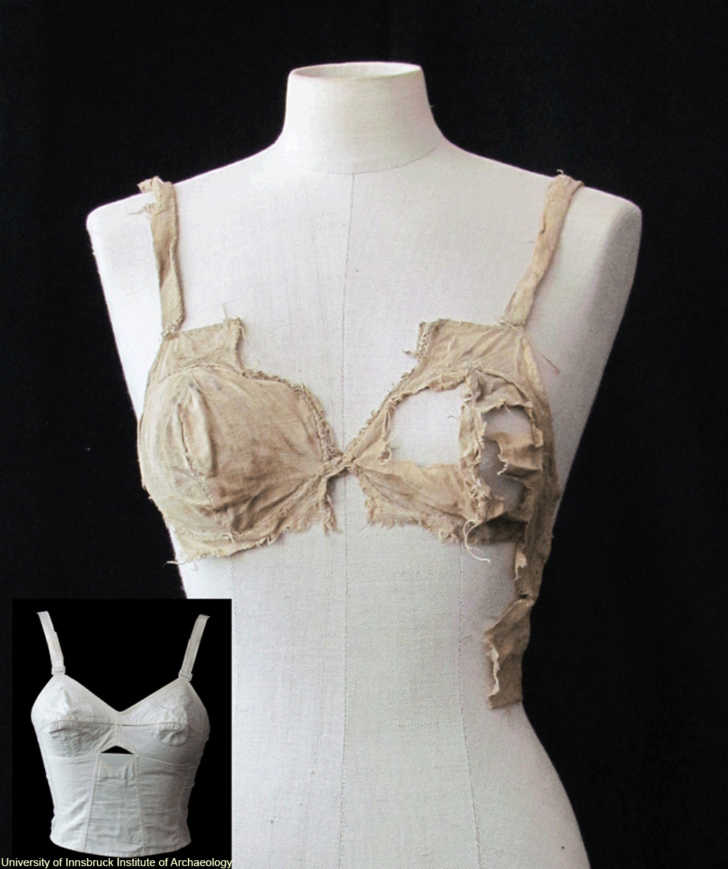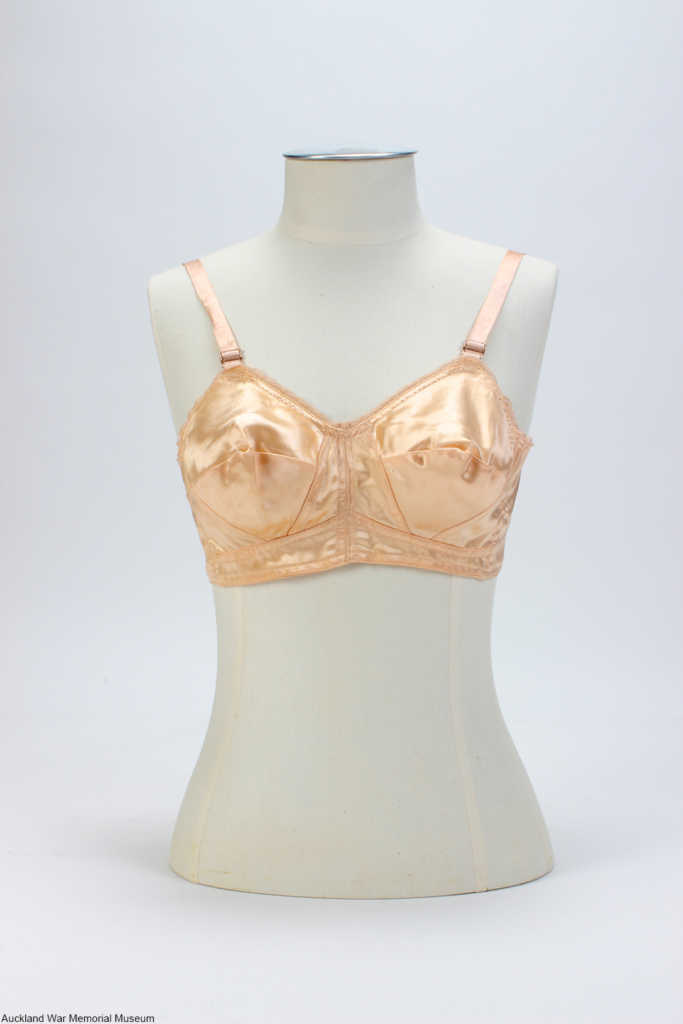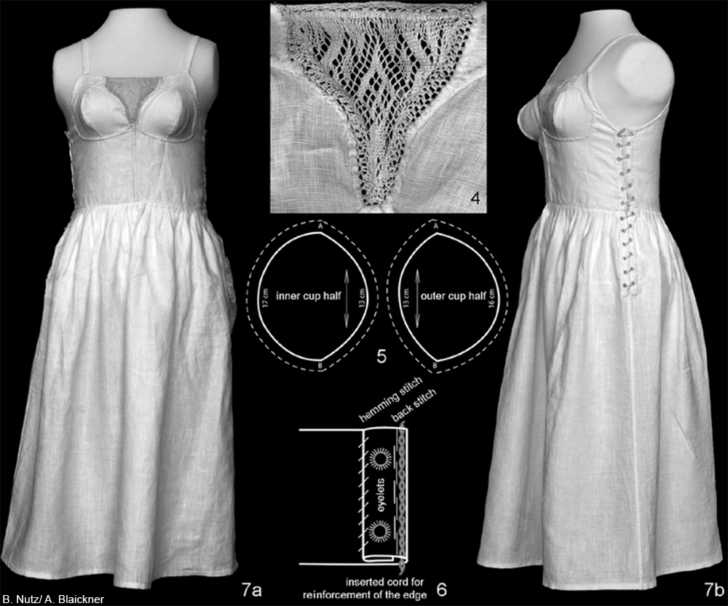History has a way of surprising us when we least expect it. In 2008, during renovations at Lengberg Castle in East Tyrol, Austria, archaeologists uncovered a sealed medieval vault filled with textiles. What they found inside didn’t just add a footnote to fashion history—it rewrote entire chapters. Among the shoes, scraps of linen, and discarded garments were items that looked strikingly familiar: men’s linen underwear and, astonishingly, four women’s bras dating back to the 15th century. This discovery challenged the long-held belief that bras were a 20th-century invention.

The Myth of the “Modern” Bra
For decades, fashion historians told a tidy story: bras were born in the early 1900s as a practical alternative to tight, restrictive corsets. They were hailed as modern inventions, tied to women’s emancipation and social progress in the roaring 1920s. But the Lengberg discovery tore that narrative apart. The bras found in the vault predated Shakespeare by more than a century, showing that supportive undergarments were not only known but worn as far back as the late medieval period.
Video : Medieval Underwear: Reconstructing the Lengberg Bra. (Part 1)
From Corsets to Bras: A Timeline Rethought
Corsets have long been seen as the defining undergarment for women, shaping the body from the 1600s through the Edwardian era. They were rigid, controlling, and deeply tied to cultural ideals of beauty. The assumption was that bras only emerged once corsets were abandoned. Yet the Lengberg bras prove that centuries before corsets reigned supreme, women were already creating alternatives that balanced comfort with functionality. This shifts the timeline of fashion innovation dramatically, revealing that the evolution of undergarments was less linear than once thought.
A Vault Frozen in Time
The conditions of Lengberg Castle’s hidden vault made this discovery possible. When crews uncovered the sealed chamber, they found over 2,700 textile fragments preserved beneath layers of rubble and straw. Radiocarbon dating confirmed the garments were made between 1390 and 1485. The collection included men’s underwear, resembling a bikini cut, and several bras with surprisingly sophisticated construction. Far from crude prototypes, these items demonstrated advanced tailoring and design for their time.
What Did Medieval Bras Look Like?

The bras from Lengberg Castle look shockingly modern. Crafted from linen, one featured lace trim—a decorative element historians assumed didn’t appear on intimate garments until centuries later. Some included fabric extensions resembling crop tops or camisoles, making them hybrids between bras and shirts. In today’s terms, you might call them early bralettes. They provided support, modesty, and even aesthetic appeal, proving that medieval women valued both practicality and beauty.
“Bags for the Breasts” – An Awkward Name for an Innovative Garment
While no one in the 1400s called them “bras,” written records from the period do reference garments known as “bags for the breasts.” The word “brassiere” itself wasn’t popularized until the early 20th century, borrowed from a French word meaning “child’s shirt.” Until the Lengberg discovery, these medieval descriptions seemed more like vague curiosities than evidence. The vault provided the missing proof—tangible, wearable garments that pushed back the origins of the bra by hundreds of years.
Medieval Tailoring That Defied Expectations
Video : Medieval Undergarments!
The vault revealed more than bras. Some dresses and linings used bias-cut techniques, allowing garments to drape naturally and fit more comfortably. This tailoring method became a hallmark of high fashion only in the 1930s, yet here it was, already mastered in the Middle Ages. The discovery suggested that medieval tailors had far greater knowledge of fabric manipulation than previously acknowledged. In essence, the craftsmanship of the 15th century was more advanced than fashion history gave it credit for.
Why This Discovery Matters
You might wonder why finding 600-year-old underwear matters. The answer lies in how it reshapes our understanding of cultural history. Fashion isn’t just about clothes—it reflects the values, needs, and ingenuity of societies. The Lengberg bras show that women were experimenting with comfort and design long before history books claimed. The presence of lace proves that even intimate garments were seen as opportunities for style and self-expression. This isn’t just about fashion; it’s about rethinking how innovation has always been part of human life.
Before Shakespeare, Before the Printing Press

To put this in context: these bras existed before William Shakespeare was born, before Gutenberg’s printing press revolutionized knowledge, and at the dawn of the Renaissance. While artists like Michelangelo and scholars of the humanist movement were reshaping culture, women were quietly wearing garments that wouldn’t resurface in mainstream history until centuries later. It’s a reminder that history often overlooks the everyday lives and ingenuity of ordinary people—especially women.
The Long Evolution of the Bra
The medieval bras didn’t wipe out corsets overnight. Corsetry would dominate for centuries, shaping silhouettes from the Renaissance to the Edwardian age. But the Lengberg garments represent a missing chapter in the evolution of women’s fashion. By the 1920s, bras became mass-produced and marketed as a liberating alternative to corsets. By the 1950s, bras had evolved into highly structured designs with underwires and padding, shaping the iconic looks of postwar fashion. Yet the foundation of all this innovation traces back much further than anyone imagined.
A Legacy Woven Into Every Stitch

The Lengberg bras remind us that what we see as “modern” often has deeper roots. They are a testament to human creativity and the timeless pursuit of balancing comfort, style, and practicality. These discoveries also shine a light on the lives of medieval women—too often ignored in historical narratives—who were clearly innovators in their own right. Fashion is not trivial; it’s a reflection of identity, culture, and ingenuity across time.
Conclusion: Rewriting Fashion History
The discovery of bras in Lengberg Castle forces us to rethink everything we thought we knew about undergarments and fashion history. Far from being a modern invention, the bra has existed for over 600 years, hidden away until archaeologists cracked open a medieval vault. These garments tell a story of innovation, creativity, and style that predates corsets and reshapes our timeline of fashion evolution.
So the next time you think of the bra as a product of modernity, remember this: while the Renaissance was just beginning, women in Austria were already wearing them. History is full of surprises—and sometimes, it hides in the most unexpected places, even in forgotten undergarments sealed away for centuries.


